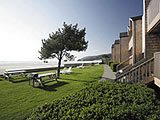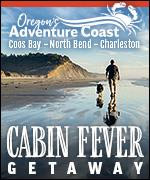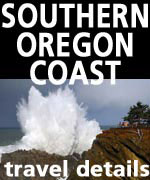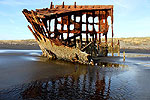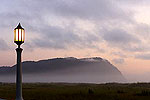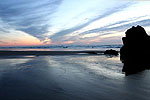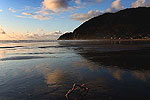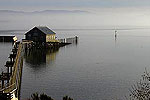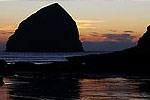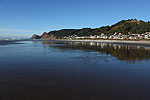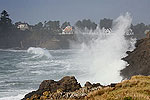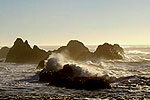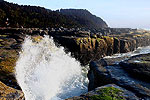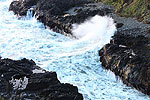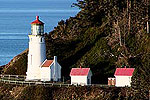Extra Caution at N. Oregon Coast's Haystack Rock Due to Nesting Pair | Cannon Beach
Published 06/05/21 at 5:50 PM PDT
By Oregon Coast Beach Connection staff
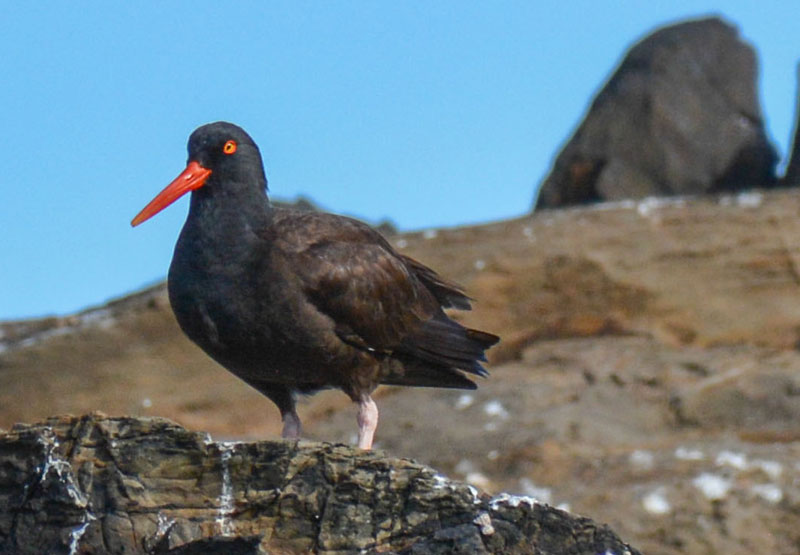
(Cannon Beach, Oregon) – Officials in Cannon Beach are asking for extra caution around Haystack Rock right now because of a tenuous situation with a pair of endangered birds that are nesting near the top. The north Oregon coast’s Haystack Rock Awareness Program (HRAP) said is at least one pair of black oystercatchers right now that have set up a nest and they are quite vulnerable at the moment. (All photos courtesy Tiffany Boothe, Seaside Aquarium)
Includes exclusive listings; some specials in winter
In Cannon Beach:
Includes rentals not listed anywhere else
In Manzanita, Wheeler, Rockaway Beach:
Some specials for winter
In Pacific City, Oceanside:
Some specials for winter
In Lincoln City:
Some specials for winter
In Depoe Bay, Gleneden Beach:
Some specials for winter
In Newport:
Look for some specials
In Waldport
Some specials for winter
In Yachats, Florence
Some specials for winter
Southern Oregon Coast Hotels / Lodgings
Reedsport to Brookings, places to stay; winter deals
While not officially on the endangered list, the black oystercatcher is of “great conservation concern” to Oregon coast officials. With less than 500 on the coastline, this makes them a focus for conservationists and scientists.
HRAP has noticed that they have laid at least three eggs, which is cause for celebration but also plenty of restraint.
“As far as we know, there is but a single pair of Oystercatchers nesting at Haystack Rock,” HRAP said on its Facebook page this weekend. “The nest site this pair have chosen, in the Saddle - AKA the central, most western front of Haystack Rock - is quite exposed, and therefore susceptible to human disruption. And, make no mistake: Oystercatchers are hyper aware of our behavior and easily disturbed - enough to where they might abandon their nest.”
Thus, local officials in Cannon Beach and HRAP are reiterating to stay off the rocks (which is already not allowed), “keep dogs on leashes and remain peaceful.”
HRAP has set up some barriers and signage in the area, and luckily there is a natural barrier of rock structure keeping people away. HRAP also currently has volunteers in the area on a regular basis to answer questions, keep the birds safe and help you spot them as well as the famed tufted puffins that are nesting on the rock right now.
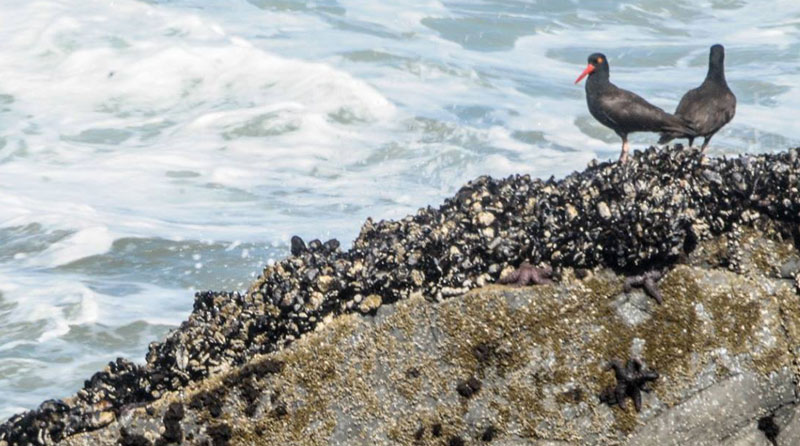
“This is a common spot for Oystercatchers to nest and lay their eggs,” said Tiffany Boothe of Seaside Aquarium. “Unfortunately, it is also one of the more accessible places for people, dogs, and other wildlife such as raccoons. The Haystack Rock Awareness Program does an excellent job of educating people about the Oystercatchers and their nesting habits along with doing their best to protect the nesting site. That being said, the Oystercatchers are not always successful. They can get spooked quite easily and abandon their nest. If this happens early on in the season there is a chance that they will try again. If the nest is successful, the newly hatched chicks are still very vulnerable.”
You can quite possibly spot other black oystercatchers now in tidepool areas and stretches of rock that are remote but still within view of the public, including plenty of spots on the southern Oregon coast around Bandon, Coos Bay, Yachats or other rocky areas.
Often during spring, there are several pairs nesting in the Cannon Beach area alone, not just on Haystack Rock.
“Wading through the shallows of the rocky intertidal zone, the Black Oystercatcher will use its long, orange beak to pry off or break apart limpets, chitons, mussels, and crabs, all of which comprise the majority of this shorebird’s diet,” Boothe said. “Contrary to what its name suggests, the Black Oystercatcher does not catch or eat oysters.”
Adding to their almost endangered status is that their birthrate has fallen in recent years and they already have a rather limited habitat range.
Boothe said its call is higher in pitch and louder than most Oregon coast shorebirds.
“In fact, you will most likely hear this bird well before you see it,” Boothe said. MORE PHOTOS BELOW
Hotels in Cannon Beach - Where to eat - Cannon Beach Maps and Virtual Tours
Cannon Beach Lodging
Nehalem Bay Lodgings
Manzanita Hotels, Lodging
Three Capes Lodging
Pacific City Hotels, Lodging
Lincoln City Lodging
Depoe Bay Lodging
Newport Lodging
Waldport Lodging
Yachats Lodging
Oregon Coast Vacation Rentals
Oregon Coast Lodging Specials
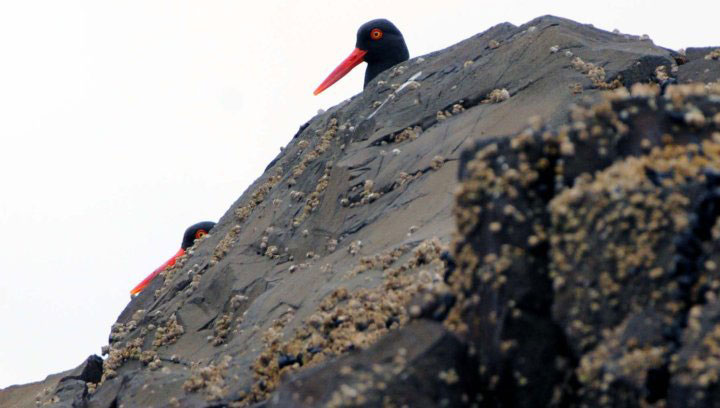
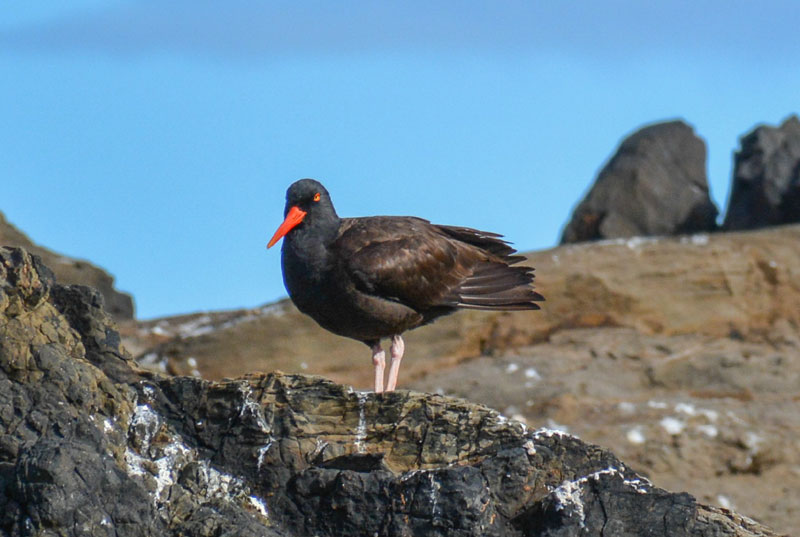
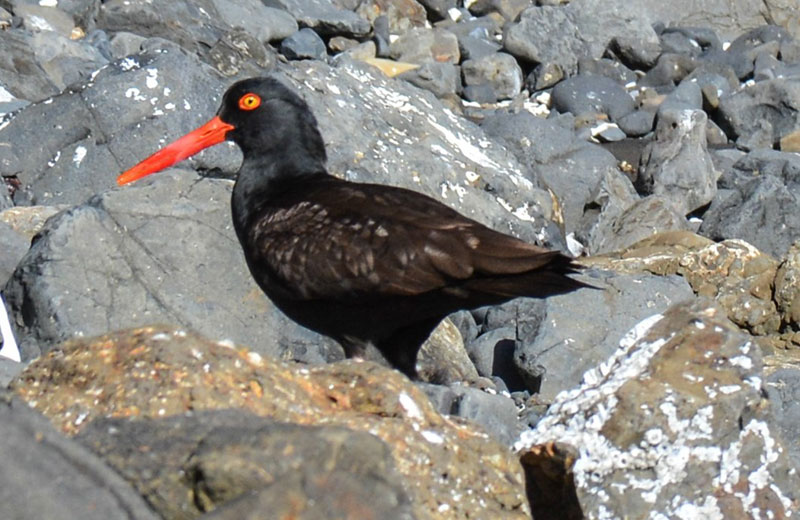
More About Oregon Coast hotels, lodging.....
More About Oregon Coast Restaurants, Dining.....
LATEST Related Oregon Coast Articles
A curious weather phenomenon that happens more out here
Curb, Road Construction Resumes in Lincoln City as Oregon Coast Season Begins...
Crews return Sept 15 with some dust and small delays. Traffi
NASA Announces First Evidence of Life on Mars in Possible Biosignature
In a former riverbed billions of years old, they found spots with interesting compounds. Astronomy
Portland, Oregon - Beaverton, Oregon Weather and Alerts | Current Conditions,...
Current weather conditions and alerts for Portland and Beaverton
Oregon Coast Scenic Railroad's Fame Engine Turns 100 Years Old with Special Runs
Sept 20 and 21 various special rides. Garibaldi events, Rockaway Beach events, Wheeler events
South Oregon Coast Goes Interstellar: Coos Bay's Sunset Bay Astronomy Fest Se...
Shore Acres State Park gets spacey. Coos Bay events
Swarm of 12 Quakes Fire Off 100 Miles from South Oregon Coast
After the initial 5.8, ranging in magnitude from 2.7 to 5.1: Coos Bay, Port Orford, Bandon, Gold Beach. Geology, weather
SOLVE Cleanup Happens Along Oregon Coast, Inland Sept 20 Through 28
SOLVE is inviting volunteers to take part. Brookings events, Gold Beach events, Port Orford events, Coos Bay events, Bandon events, Florence events, Yachats events, Newport events, Lincoln City events, Rockaway Beach events, Manzanita events, Cannon Beach events, Seaside events, Astoria events
Back to Oregon Coast
Contact Advertise on BeachConnection.net
All Content, unless otherwise attributed, copyright BeachConnection.net Unauthorized use or publication is not permitted





